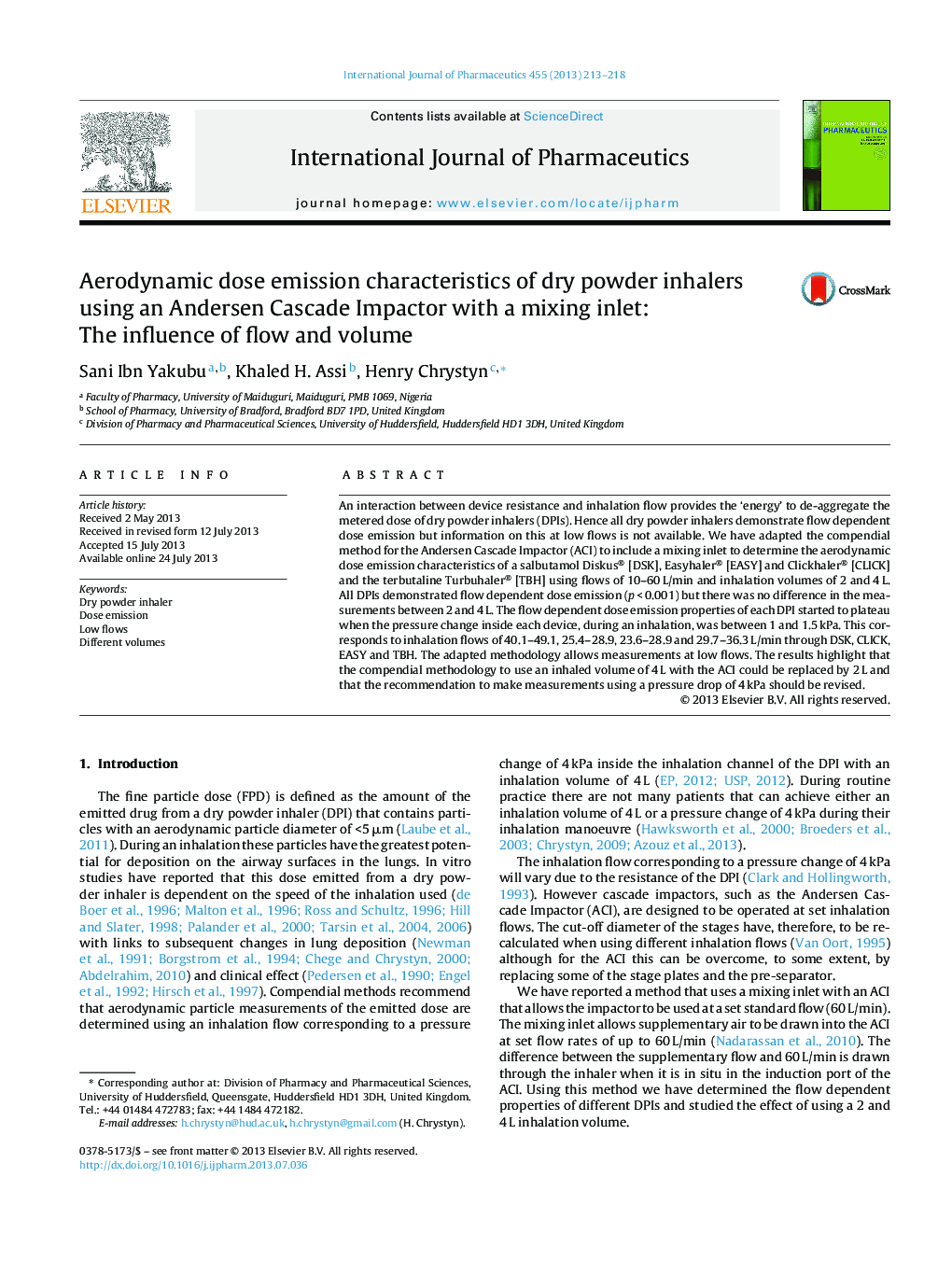| کد مقاله | کد نشریه | سال انتشار | مقاله انگلیسی | نسخه تمام متن |
|---|---|---|---|---|
| 2502096 | 1557376 | 2013 | 6 صفحه PDF | دانلود رایگان |

An interaction between device resistance and inhalation flow provides the ‘energy’ to de-aggregate the metered dose of dry powder inhalers (DPIs). Hence all dry powder inhalers demonstrate flow dependent dose emission but information on this at low flows is not available. We have adapted the compendial method for the Andersen Cascade Impactor (ACI) to include a mixing inlet to determine the aerodynamic dose emission characteristics of a salbutamol Diskus® [DSK], Easyhaler® [EASY] and Clickhaler® [CLICK] and the terbutaline Turbuhaler® [TBH] using flows of 10–60 L/min and inhalation volumes of 2 and 4 L. All DPIs demonstrated flow dependent dose emission (p < 0.001) but there was no difference in the measurements between 2 and 4 L. The flow dependent dose emission properties of each DPI started to plateau when the pressure change inside each device, during an inhalation, was between 1 and 1.5 kPa. This corresponds to inhalation flows of 40.1–49.1, 25.4–28.9, 23.6–28.9 and 29.7–36.3 L/min through DSK, CLICK, EASY and TBH. The adapted methodology allows measurements at low flows. The results highlight that the compendial methodology to use an inhaled volume of 4 L with the ACI could be replaced by 2 L and that the recommendation to make measurements using a pressure drop of 4 kPa should be revised.
The dose emitted from a dry powder inhaler is dependent on the pressure change generated by the interaction between inhalation flow and the device's resistance (a). Aerodynamic dose characteristics can be measured at low flows using the above in vitro methodology (b). Consideration should be given to the aerodynamic dose characteristics of the emitted dose from a DPI using a 2 L inhalation volume and a lower pressure change than the recommended 4 kPa (c and d).Figure optionsDownload high-quality image (221 K)Download as PowerPoint slide
Journal: International Journal of Pharmaceutics - Volume 455, Issues 1–2, 15 October 2013, Pages 213–218